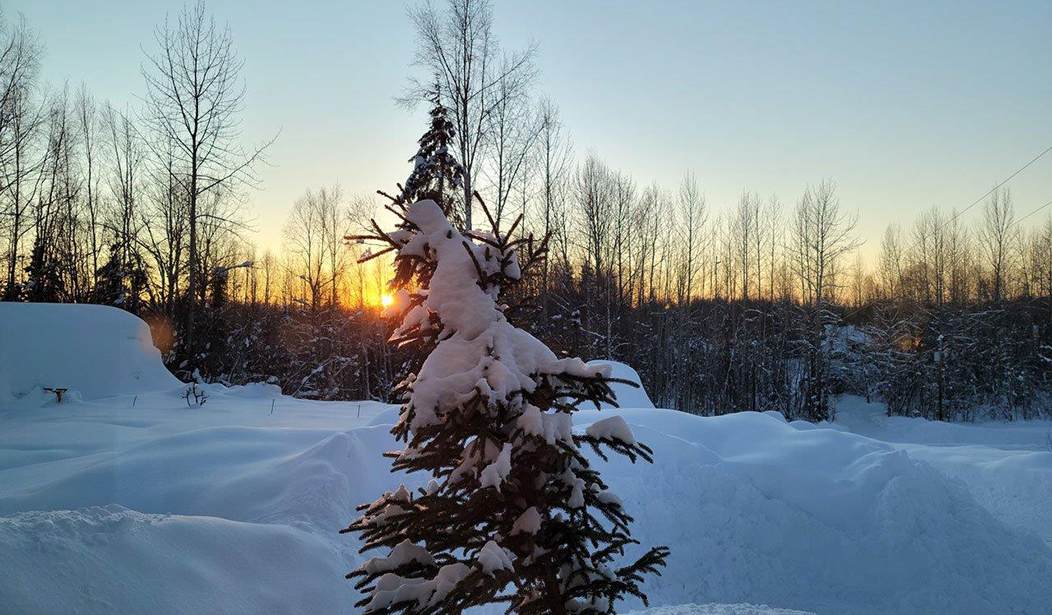When Alaskans have a snow machine race (what people in the lower 48 call "snowmobiles" are called "snow machines" in the Great Land), they don't pussyfoot around. The Iron Dog race is a 2,500-mile snow machine race that begins in Big Lake, Alaska, just west of Wasilla, and ends up in Nome - the route runs through a great deal of Alaskan wilderness. It's a challenge to test the mettle of the toughest Alaskan, and the 2024 Iron Dog is going on right now, having kicked off on Saturday.
A brutal, unforgiving race, the Iron Dog is considered by many one of the toughest snowmachine races in the world.
In its 40th edition, 23 Pro Class teams race from Big Lake to Nome and back, including the Kotzebue Loop. The race began Saturday morning in Big Lake. The game plan for the more than 2,500-mile race is consistent for most teams.
“We want to stay clean for the first day, get the first day out of the way,” Evan Barber, of team 9, said. “It is the toughest terrain, so we’ll do what we can.”
Team 48′s Kristofer Sindorf gave his advice.
”Stay smooth, stay consistent, stay hydrated,” Sindorf said.
Race veteran George Lambert is running Team 33 with rookie Skyler Wells this year.
”Just take it easy the first day, get the first day out of the way, make sure you’re running a nice, smooth race.,” Lambert said.
The race can’t be won in one day. It can be lost in a day, though.
”Day one is just about keeping it shiny side up, keep the skis down, try to work out the jitters, it is a lot of preparation coming down to these next few days,” Klinton VanWingerden, of Team 49, said.
The weather is salubrious for mid-February in Alaska at the moment, with daytime highs around here approaching 30 degrees, but it's not unusual for temps to be double-digits below zero at this time of year - as it was, only a couple of weeks ago.
Snowmachining in those conditions takes fortitude.
The Iron Dog is a snow machine race, but as far as fame across the land, it is still eclipsed by the most famous of far-north competitions, the Iditarod, which kicks off on March 2nd in Anchorage with the symbolic start - and the actual dogs-on-the-ground version starts the next day, March 3rd, in Willow, a short drive from our own Susitna Valley home. We have driven down in the past and likely will again to see the mushers off. We know a few of the mushers, including a neighbor who lives up the next side road - in fact, most of the people in the area know someone who is a regular in either the Iron Dog or Iditarod races - if not both.
Alaska is that kind of place. We have our own heroes and deal with our own issues, including some that many in the lower 48 don't often encounter.
See Related: Valdez, Alaska to Gain Statue of Famous Resident, Born in 2335: One William T. Riker
Alaska Teen Suffers Minor Injuries in Moose Attack: Moose, Not So Lucky
Think for a moment what this race is like - hundreds of miles of subarctic environment, with no warm lodges, no hot food, no convenience stores, and no gas stations - just snow, snow, and more snow, mountain ranges to cross, no landmarks, just the wilds. But, the one advantage these racers have is this: They can't get lost, because wherever they are, they know they are in Alaska.
You can see the real-time Iron Dog Tracker here, and you can see the current list of Iditarod mushers here.













Join the conversation as a VIP Member